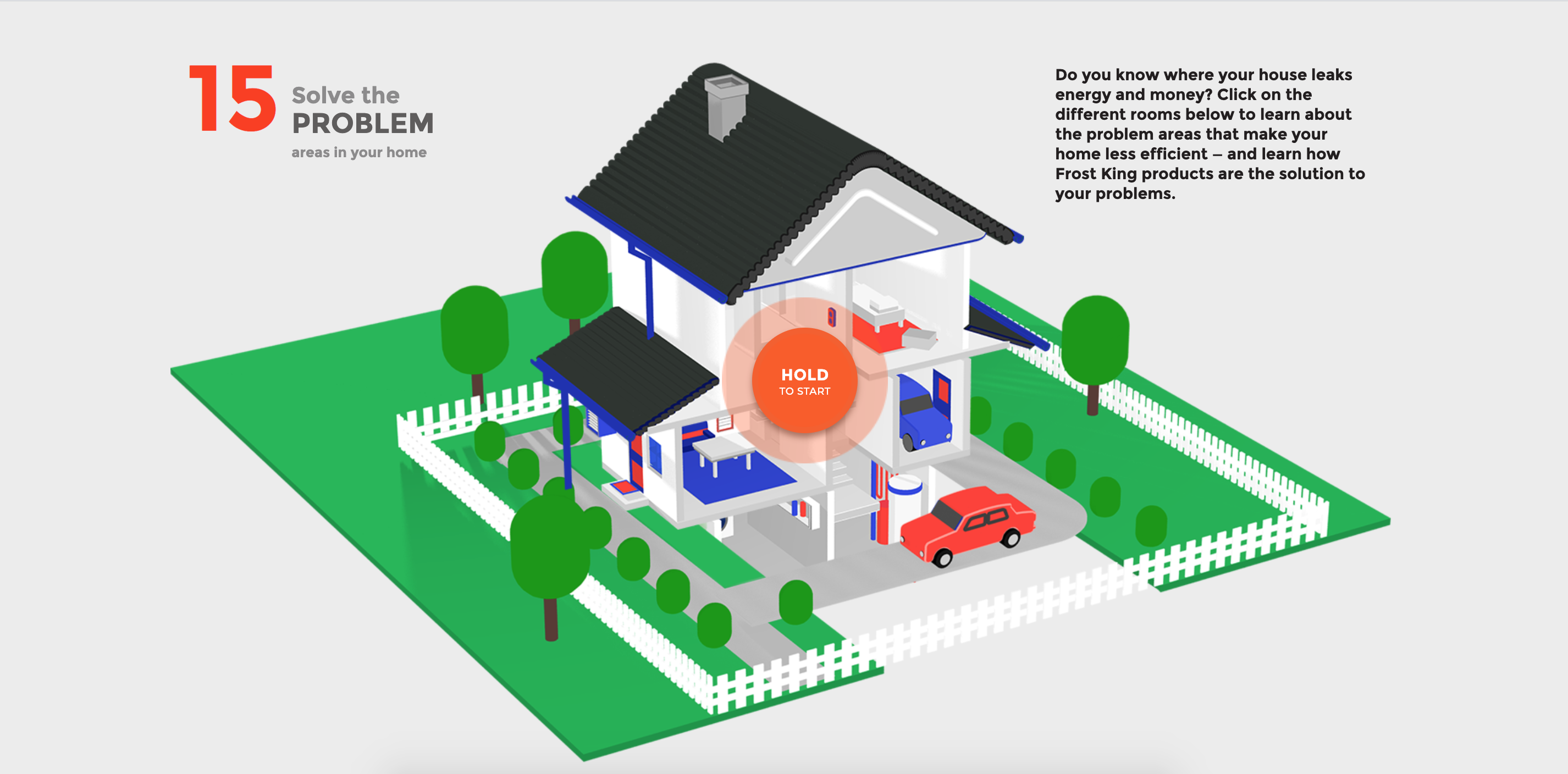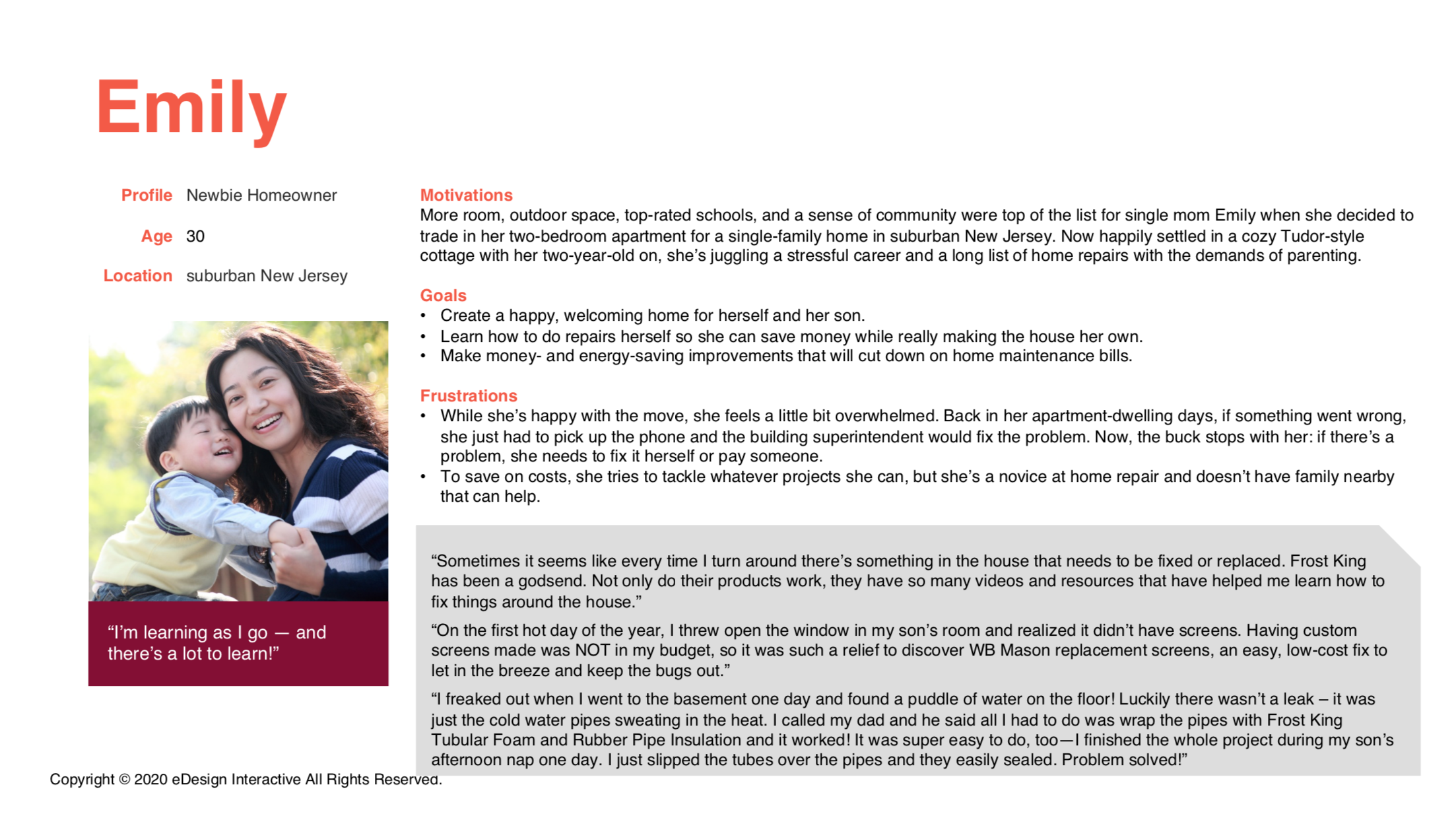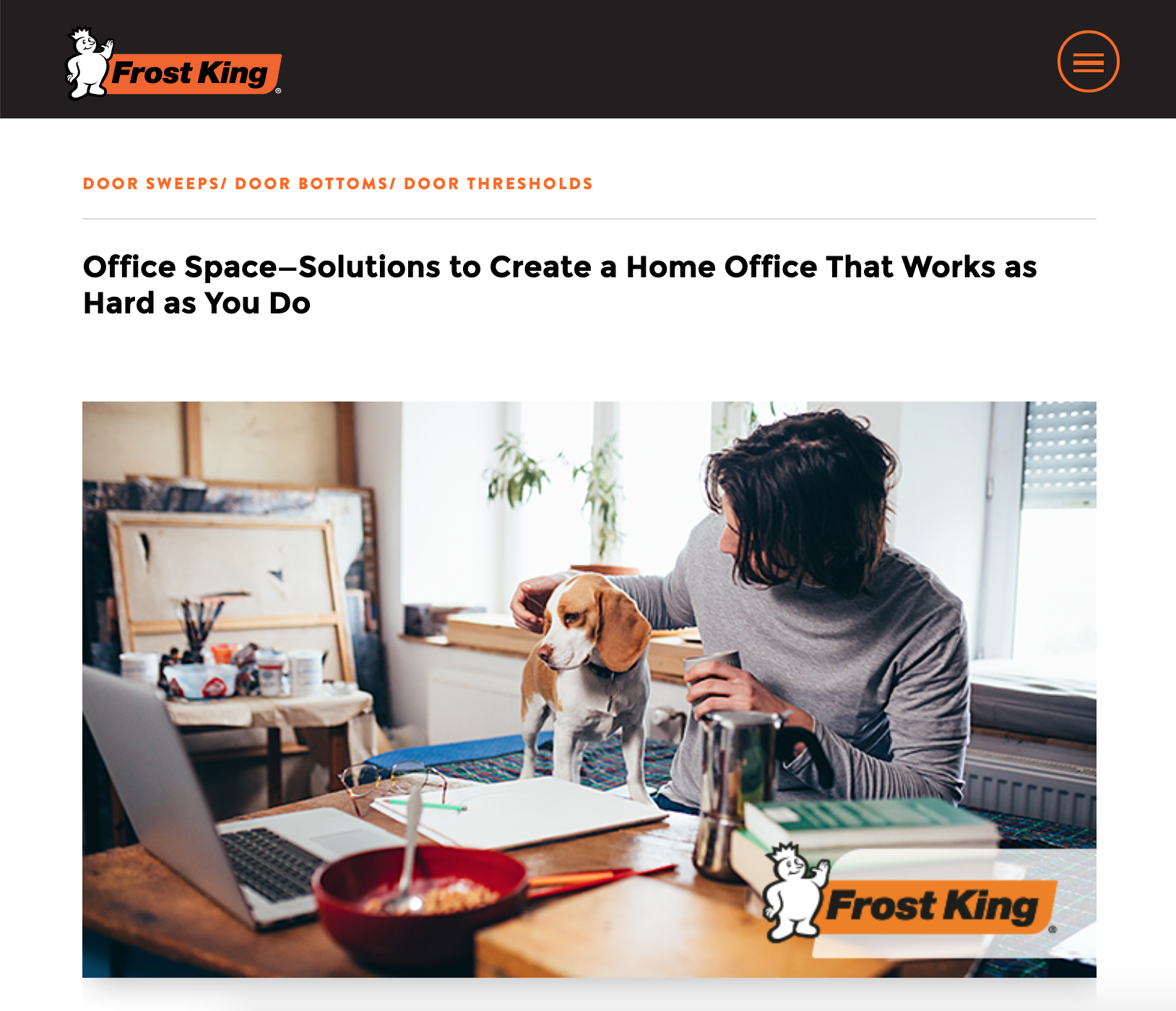Our marketing team is actively tracking consumer behavior as a result of the pandemic. Through the companies we serve, we are witnessing the daily impact of lockdowns, business closures, and the overall changes in shopping behaviors, especially in the Consumer Packaged Goods (CPG) industry. We have come to the realization that the global crisis is changing marketing strategies and accelerating digital transformation for B2B and B2C companies faster than ever.
To stay competitive, businesses, small and large, need to rethink how they approach and engage customers.
Marketing strategies need to adapt to new consumer behaviors during the global crisis. (photo credit: eDesign Interactive)
Drawing from our experience, we would like to offer our marketing perspective on how to navigate these uncharted waters. We have put together a short case study to demonstrate how we analyze and apply the current market trends to a CPG brand in the home improvement space, a category that has seen higher demand since the pandemic hit.
The Importance of Empathy
The last 6 months have created a completely new context in the way we design, plan, and create our marketing messages. The need for relevance and immediacy has pushed brands towards being more helpful, connecting with users in new ways, and offering added-value results. The concept of thought leadership has now been replaced by transparency.
This is a good time to invest in brand awareness instead of sales conversations. To keep your brand strong, you need to be context-aware and supportive. These unprecedented times call for reassuring marketing campaigns focused on empathy, and more importantly, for brands to show what their own ethos is all about.
These unprecedented times call for reassuring marketing campaigns focused on empathy. (photo credit: eDesign Interactive)
Consumers are homebound, worried about losing their job, or busy looking after their kids. For these reasons, engagement needs to include visuals designed around assistance, comfort and personal care, while marketing communication should focus on solutions. Instead of advertising “Here’s what we offer”, brands should be asking “What do you need?” and “How can we help you solve your specific challenge in a cost-effective way?”.
As a brand, you really need to tap into the insights of what drives consumer behavior and purchases in your product category. Analyze your performance metrics, spend time evaluating ongoing user trends, and most of all, understand your clients. What are their goals? What are their frustrations? What motivates and inspires them? Understanding the intent behind your clients’ shopping decisions will contribute to a better user experience, higher conversion rate, and loyalty.
Now let’s put the theory into context by analyzing a real marketing campaign.
 Frost King’s marketing communication is focused on solutions. (photo credit: eDesign Interactive)
Frost King’s marketing communication is focused on solutions. (photo credit: eDesign Interactive)
Meet Frost King
Frost King is the #1 weatherization brand in the DIY home improvement space. From weather-stripping to pipe/duct insulation to energy-saving window kits, the brand is available at more than 10,000 hardware stores in the U.S. and various home improvement retailers worldwide.
Frost King is an interesting consumer brand that does not sell directly to consumers. Theoretically, the brand should only foster its relationship with retailers, their primary distribution channels. Yet, Frost King’s main goals include connecting with users in meaningful ways. Let’s look at some insights of their digital strategy to understand how they produce extremely successful campaigns in any economic environment.
Step 1: Recognize the Current Context in Your Industry
To understand the trends in a particular industry, we look at our client’s online performance and compare it to the digital growth indicators of the market. The client data we analyze include the following metrics:
- Existing Website Sessions. We look at the average session time, bounce rate, and specific page performance. We typically create a visual chart to compare the website sessions and organic search versus monthly ads budget. We then analyze the website sessions by channel: Google display, Google budget, NJAM display, organic search, paid search, referral, social engagement, and social budget.
- Ad Performance and CPC. We gather the advertising numbers for clicks and compare them to our budget and cost-per-click analysis. We create more visual graphics to help us understand the overall CPC trends in Google Search, Google Display, and Social Ads.
- Direct Traffic and Organic Traffic. We analyze Frost King’s traffic sources besides the advertising channels (direct, organic, and referral).
- Social Engagement. We look at the highest performing content and average click-through rates to understand what people are interested in, the trending information, and calls to action.
All of these metrics paint a picture of Frost King’s direct engagement with its audience.
We also look at the growth indicators in our client’s particular industry. According to Google Trends, the interest in DIY home improvement topics has raised significantly since March 2020, during the COVID-19 outbreak. People are spending more time at home and have started undertaking various DIY projects. The New York Times published an article about home improvement during the pandemic stating that the quarantine has presented an opportunity for taking on repairs or launching DIY projects. The revenues from stores like Home Depot and Lowes have spiked during the peak months of the pandemic as everyone is trying to make their home more comfortable and welcoming due to the additional time they’re spending around the house.
At the same time, Statista.com is reporting that 17% of people in the US are currently spending more than usual on housing, energy, and maintenance (electricity, waste disposal, DIY, etc.) due to COVID-19.
Additionally, we also look at indicators such as relevant searches by category (e.g. “insulating products”), home insulation interest by State (e.g. “window kits”), relevant Google searches by State (e.g. “weatherstripping”), and DYI home improvement interest data.
Combining our industry data, we know Frost King buyers are trying to fix their homes. We also know customers are under a lot of stress and financial burden. They have less money to spend and want to do things themselves, or want to avoid having an outsider in their house with the risk of the pandemic still high.
Remember the questions “What do you need?” and “How can we help you solve your specific challenge in a cost-effective way?”. To solve home improvement challenges, Frost King has directed its marketing efforts towards immediate user attention and DIY-friendly solutions that insulate drafty doors and windows and help lower the cost of a homeowner’s energy bill.
 Frost King’s mobile application helps customers identify potential “problem areas” that leak energy and cost them money. (photo credit: eDesign Interactive)
Frost King’s mobile application helps customers identify potential “problem areas” that leak energy and cost them money. (photo credit: eDesign Interactive)
Step 2: Build an Emotional Connection with your Clients
Frost King customers are people with home improvement and DIY interest, are between 45–60 years old, have low to middle income, and are typically located in the Northeast and Northwest states of the US.
Now that we know who our core audience is, we need to understand their goals, frustrations, what motivates them, and what inspires them. In the case of Frost King, we have put together engaging personas and narratives.
 To know your core audience, you need to understand customers’ goals, frustrations, what motivates them, and what inspires them. (photo credit: eDesign Interactive)
To know your core audience, you need to understand customers’ goals, frustrations, what motivates them, and what inspires them. (photo credit: eDesign Interactive)
To amplify its positive impact, the brand has focused on reaching customers who have bought or are renting an older home they cannot afford to remodel. A great example shown here is Emily, a single mom who cannot afford to remodel her house or install new windows. She needs a quick, effective solution to stay warm in the winter and help keep her energy bill low.
The marketing message shows how Frost King helps make home improvement projects easy for anyone. It also portrays a brand that cares about its customers and wants to make a difference. The visual designs are comforting and positive, centered on providing solutions.
 Frost King’s blog content is focused on helpful DIY tips to improve your home environment and extends beyond their own products. (photo credit: eDesign Interactive)
Frost King’s blog content is focused on helpful DIY tips to improve your home environment and extends beyond their own products. (photo credit: eDesign Interactive)
Step 3: Generate Product Awareness
More then ever, Frost King is focused on creating content that drives brand awareness, consumer engagement, and ultimately, retail traffic conversions. The brand is investing in educating customers on the practical, low cost, and high-value solutions Frost King products offer to make their home more comfortable and energy-efficient.
 Frost King’s website shows clients how easy it can be to save money and energy. (photo credit: eDesign Interactive)
Frost King’s website shows clients how easy it can be to save money and energy. (photo credit: eDesign Interactive)
The brand is there to educate customers beyond Frost King products and to champion them to become DIY superstars. Content strategy is not necessarily pushing products, but really taking part in the homeownership dialogue with consumers. Frost King wants to be seen as a true partner in making every home environment more comfortable and happy.
The key takeaway is whether you are selling products directly online or through retail stores, the relationship you have with your consumers is paramount. Expanding this relationship will bring new opportunities for growth and drive more point-of-purchase sales.
When people have a great experience with Frost King’s website and online content, their recollection of empathy and support, the brand awareness and education will have an impact when that individual is in the aisle of a hardware store deciding whether to choose a Frost King product or that of a competitor.
Step 4: Improve the User Experience
We track lots of data, including Frost King’s website traffic, content engagement, mobile traffic, and how often people are searching for retail locations. These data are valuable for building retail relationships and showing us new opportunities and markets that maybe not be as well represented.
From experience, here are 6 areas brands can focus on to improve their web engagement, search results ranking, and organic traffic:
- Invest in continuous search-engine optimization (SEO). Google’s algorithms change frequently. Even if your website has been optimized for search engines before, it is recommended to conduct regular audits to see what can be improved.
- Write longer and more helpful articles in order to truly engage users. The additional length will give the opportunity to be more informative and influence organic search in a positive way.
- Plan your content according to your engagement data. Find out which topics interest your users the most and share insight knowledge.
- Categorize your content. For example, organize your content by type of product (weatherstripping) and by topic (home insulation). If users are not that familiar with your products, they will still be able to find what they are looking for.
- Aim to create social buzz. Think of boosting your Instagram profile, influencer marketing, giveaways, sweepstakes, engaging video content, interactive videos, and images. All of these components play a very big role in consumer engagement.
- Improve the presentation of your product. Brands need to do a better job showing their products in an intimate way, with close up visuals, using real-life situations. Invest in great photography and videography.
* * *
During tough times, businesses can really shine by showing support to their clients. It’s important to build your market share and awareness. Focus on transparency, advice, and loyalty programs to create a more authentic experience and to develop long-term relationships with customers.
It’s also a great time to reach consumers directly. The pandemic has created an opportunity for many brands. The numbers are staggering. Most of our clients are seeing online sales increase by 30 to 55% compared to last year. If you do not have an eCommerce experience yet, now is the time to invest in it and explore how it can create a new channel of revenue for your company.
Do you have a project we can help with? Just say hello@edesigninetractive.com.
You can find examples of our work here.